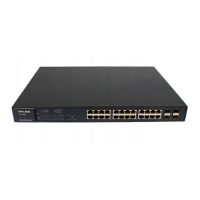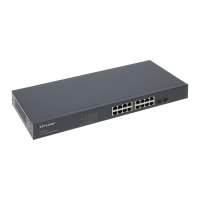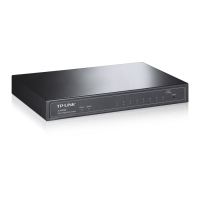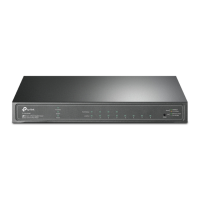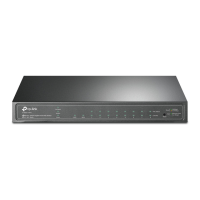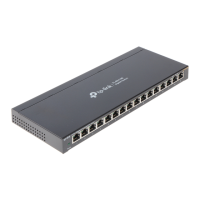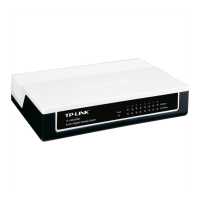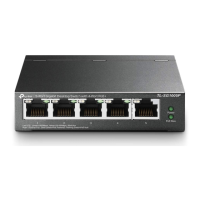Configuring QoS Class of Service Configuration
User Guide 527
Scheduler Type Select the type of scheduling used for corresponding queue. When the network
congestion occurs, the egress queue will determine the forwarding sequence of
the packets according to the type.
Strict: In this mode, the egress queue will use SP (Strict Priority) to process the
traffic in different queues. When congestion occurs, the traffic will be transmitted
according to its queue priority strictly. The queue with higher priority occupies
the whole bandwidth. Packets in the queue with lower priority are sent only when
the queue with higher priority is empty.
Weighted: In this mode, the egress queue will use WRR (Weighted Round Robin)
to process the traffic in different queues. When congestion occurs, all the traffic
will be transmitted, but the bandwidth that each traffic queue occupies will be
allocated based on the queue weight.
Queue Weight Specify the queue weight for the desired queue. This value can be set only in the
Weighted mode. The valid values are from 1 to 127.
Management
Type
Displays the Management Type for the queues. The switch supports Taildrop
mode. When the traffic exceeds the limit, the additional traffic will be dropped.
3) Click Apply.
Note:
With ACL Redirect feature, the switch maps all the packets that meet the configured ACL rules to the
new TC queue, regardless of the mapping relations configured in this section.
2.2 Using CLI
2.2.1 Configuring Port Priority
■ Configuring the Trust Mode and the port to 802.1p Mapping
Follow these steps to configure the trust mode and the port to 802.1p mapping:
Step 1 configure
Enter global configuration mode
Step 2 interface {fastEthernet
port
| range fastEthernet
port-list
| gigabitEthernet
port
| range
gigabitEthernet
port-list
| ten-gigabitEthernet
port
| range ten-gigabitEthernet
port-list
|
port-channel
port-channel-id
| range port-channel
port-channel-list
}
Enter interface configuration mode.
Step 3 qos trust mode {
untrust
|
dot1p
|
dscp
}
Select the trust mode for the port. By default, it is untrust. Here we set the trust mode as
untrust.
untrust:
Specify the ports’ trust mode as untrust. In this mode, the packets will be processed
according to the port priority configuration.

